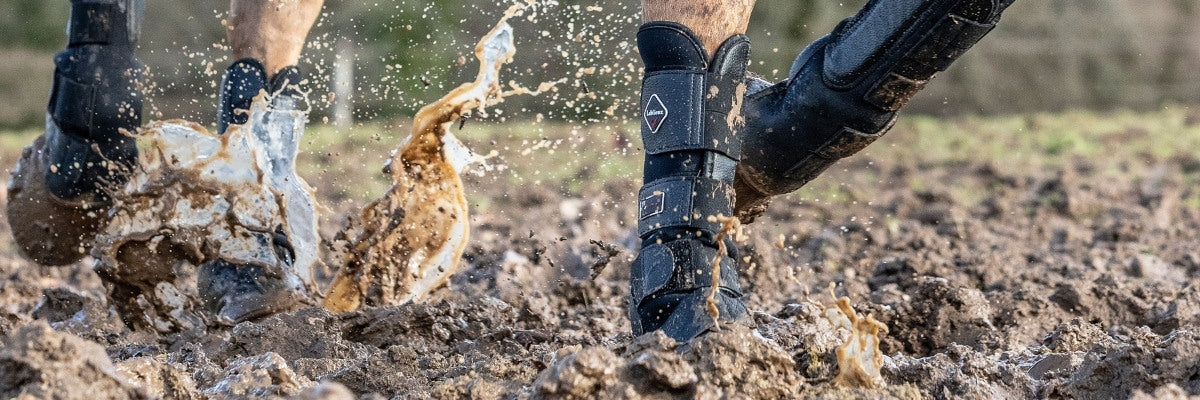
Protecting Your Horse from Mud Fever: Causes, Signs & Prevention Tips
All of the recent wet weather leaves our horses more at risk of seasonal conditions such as mud fever. Some horses will be more prone than others, but it’s important to stay vigilant through the autumn, winter and early spring months.
Mud fever is caused by continual wetting of the skin, which breaks down its natural defences and allows bacteria to enter, leading to infection.
What is Mud Fever?
Mud fever (also known as pastern dermatitis) is a common skin condition that affects horses, particularly in damp, muddy conditions. It often occurs on the lower legs, especially those with white hair or pink skin, who are more susceptible.
Signs of Mud Fever
Look out for these typical symptoms:
-
Matted hair and scabs on the lower legs (usually on heels and pasterns)
-
Moist, ulcerated lesions beneath scabs
-
Thick, creamy discharge (white, yellow, or greenish)
-
Cracked, sore skin and inflammation
-
Hair loss revealing raw, irritated skin
-
Heat, swelling, and discomfort in the affected area
-
Lameness or reluctance to move
-
In severe cases: loss of appetite, lethargy, and signs of discomfort
Early detection is key. Check your horse’s legs and hooves daily to identify issues before they worsen.
Common Causes of Mud Fever
-
Prolonged exposure to wet, muddy or dirty conditions
-
Mild, damp weather
-
Excessively washing legs and failing to dry them thoroughly
-
Horses with white markings or pink skin
-
Compromised immune system or poor skin condition
How to Treat Mud Fever
Effective treatment involves keeping the affected area clean and dry:
-
Remove your horse from wet conditions – use stabling or dry turnout if possible
-
Clean the area gently – use an antibacterial wash like diluted Hibiwash to soften and remove scabs
-
Dry thoroughly – pat dry with a clean towel and avoid leaving the skin damp
-
Apply a topical treatment – use creams, ointments or emollients recommended by your vet
-
Bandage if appropriate – helps to keep the area protected, but only if advised
-
Seek veterinary advice – antibiotics may be required for severe or persistent cases
How to Prevent Mud Fever
Preventing mud fever is easier than treating it. Here are key prevention tips:
-
Fence off particularly muddy or waterlogged areas of the field
-
Use a barrier cream on clean, dry legs before turnout
-
Avoid excessive leg washing and ensure legs are dried properly
-
Allow mud to dry naturally and brush off rather than washing
-
Invest in turnout boots or mud fever chaps to protect the legs during turnout
Prevention is especially important during wet and muddy seasons. Incorporating turnout boots or chaps into your routine can significantly reduce the risk.
Final Thought
Mud fever can be distressing for both horse and owner, but with daily checks, good management and appropriate protection, it can be effectively controlled or avoided altogether. Always consult your vet if you're concerned about your horse’s condition.

